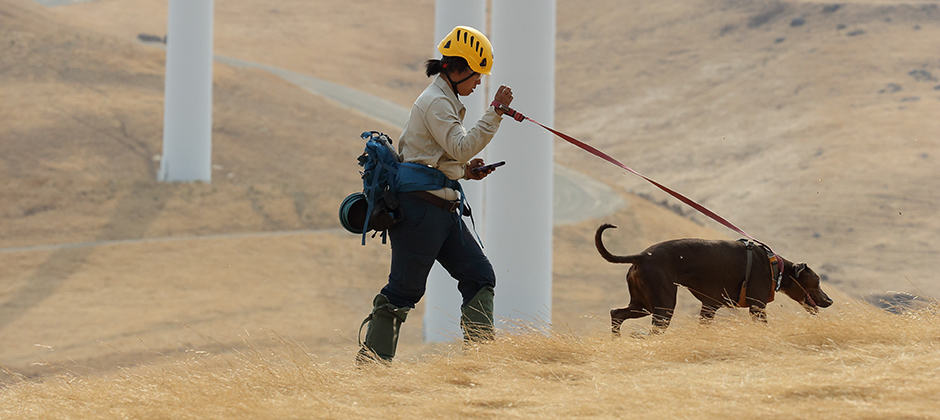Share this article
JWM: Sniffing out bird and bat mortalities at turbines
Detecting wildlife deaths at wind turbines isn’t an easy job. Researcher Shawn Smallwood had been at it for 20 years, and he felt humans missed so many carcasses, detection dogs could do a better job.
Using dogs from Conservation Canines, a University of Washington-based organization that trains dogs from animal shelters to be detection dogs, Smallwood, an independent biologist, set out to find out.
Deploying the dogs at two wind projects in California, he found he was right. The dogs were vastly better than humans at finding both bat and bird carcasses.
“It was a huge difference.” said Smallwood, lead author of the study published in the Journal of Wildlife Management.
Smallwood and his team compared detection by dogs at Buena Vista and Golden Hills to data they already had on human detection at the neighboring Vasco Winds Energy project. Then, they compared concurrent human and dog detection at Golden Hills.
The researchers found that the dogs on average detected 95% of bat carcasses and 91% of bird carcasses in both study areas. They even extreme-tested the dogs, putting out baby birds and bats that have less of a scent and are much smaller and harder to detect. “They got almost all of them,” Smallwood said. “It was stunning for me.”
People, on the other hand, detected less than 5%, he said.
The dogs tend to be more expensive than humans because of veterinary costs — one dog, for instance, got bitten by a rattlesnake and needed treatment — but their precision pays off, Smallwood said. “It may cost a little more money, but you’re getting 20 times more bats that are out there,” he said.
Once detection improves, researchers can have better information to inform managers which turbines in particular are causing more mortalities. “We would get a true understanding of what the impacts are on bats and small birds,” he said. “We are grossly underestimating small birds.”
Smallwood sees lots of untapped applications for detection dogs in the field. “They open up doors all over the place for wildlife biology,” he said.
This article features research that was published in a TWS peer-reviewed journal. Individual online access to all TWS journal articles is a benefit of membership. Join TWS now to read the latest in wildlife research.
Header Image:
Researchers found dogs can detect bat and bird mortalities at wind turbines better than humans.
©Shawn Smallwood








